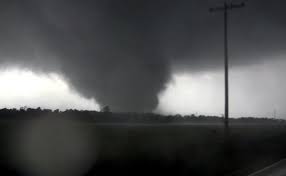
Introduction: The Destructive Nature of Tornadoes
Tornadoes are one of nature’s most ferocious weather phenomena, characterized by their rotating, funnel-shaped clouds that extend from thunderstorms to the ground. Their unpredictable nature and intense winds can result in devastating destruction, causing significant loss of life and property. Understanding tornadoes, particularly in the context of increased climate variability and extreme weather occurrence, is essential for improving preparedness and safety measures within affected communities.
Recent Tornado Activity in Canada
Canada experiences an average of 80 to 100 tornadoes each year, predominantly in the provinces of Alberta, Saskatchewan, and Ontario. In July 2023, both Ontario and Quebec faced severe weather conditions that resulted in multiple tornado warnings and confirmed touchdowns. The tornadoes caused significant property damage in rural areas, uprooted trees, and disrupted power supplies, leaving thousands without electricity.
Emergency response teams were deployed immediately, focusing on helping affected residents. According to Environment and Climate Change Canada, this year has exhibited an above-average index of tornado activity due to atmospheric conditions prompted by climate change. Reports of enhanced moisture and temperature gradients have complicated predictions of tornado formation.
Safety Measures and Preparedness
Understanding safety measures is vital for minimizing the risks associated with tornadoes. Meteorologists emphasize the importance of preparedness, advising residents in high-risk areas to have a family emergency plan and an emergency kit ready. Moreover, individuals should stay informed by monitoring local weather forecasts and participating in community emergency drills.
Most importantly, during a tornado watch or warning, it’s crucial to seek safe shelter. This includes moving to a basement or an interior room on the lowest floor of a sturdy building. Avoid windows and exterior walls to reduce the risk of injury from flying debris.
Conclusion: The Future of Tornado Preparedness
As climate change continues to influence weather patterns, the potential for tornadic activity may increase. Consequently, investments in research, monitoring systems, and community education are critical for effective tornado forecasting and safety measures. Understanding tornadoes and their impact on communities is not only beneficial for those living in affected areas but also essential for ongoing dialogue surrounding climate resilience strategies. Greater awareness and preparedness can help mitigate the harm caused by these powerful storms, ultimately saving lives and protecting livelihoods.

